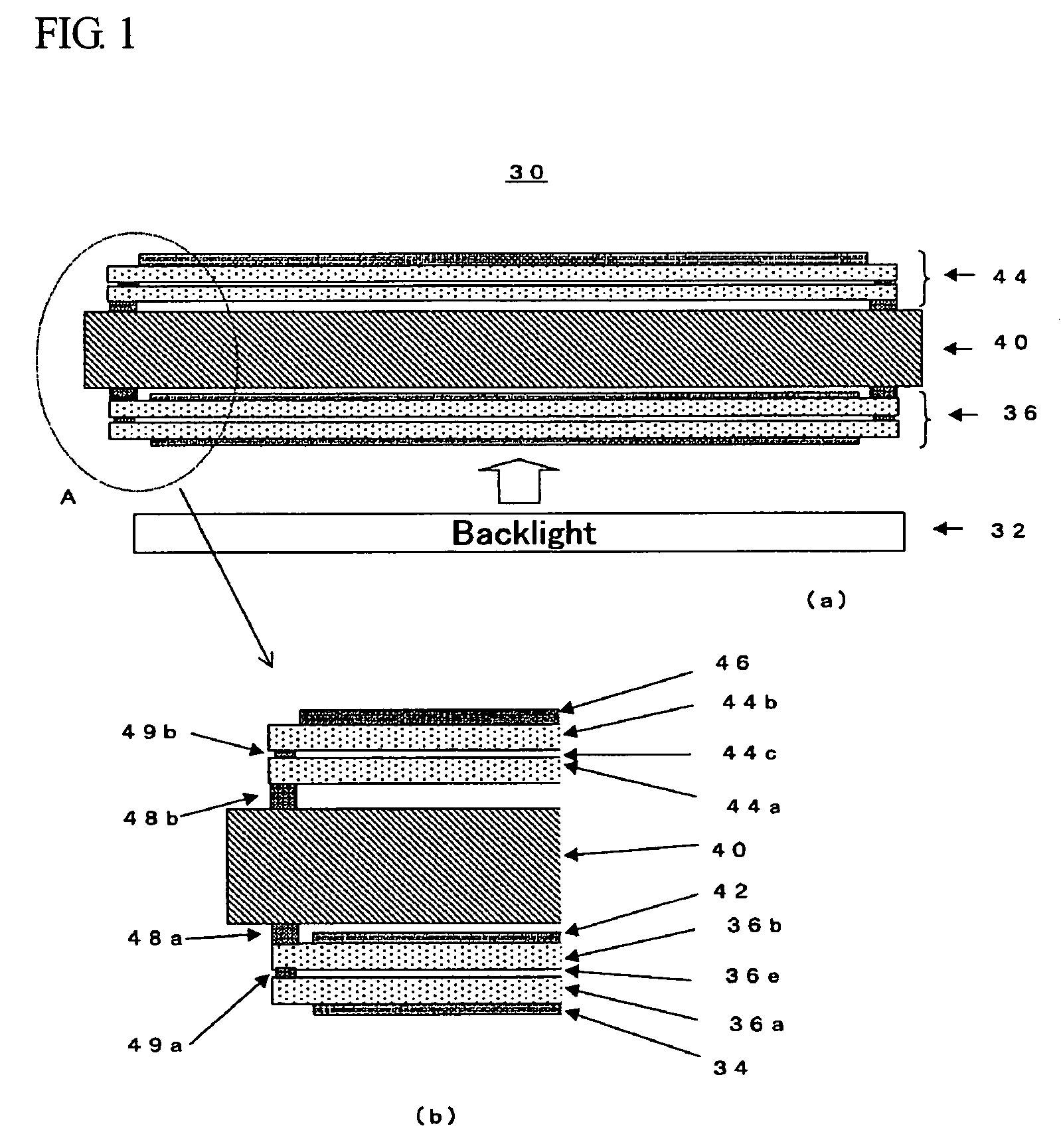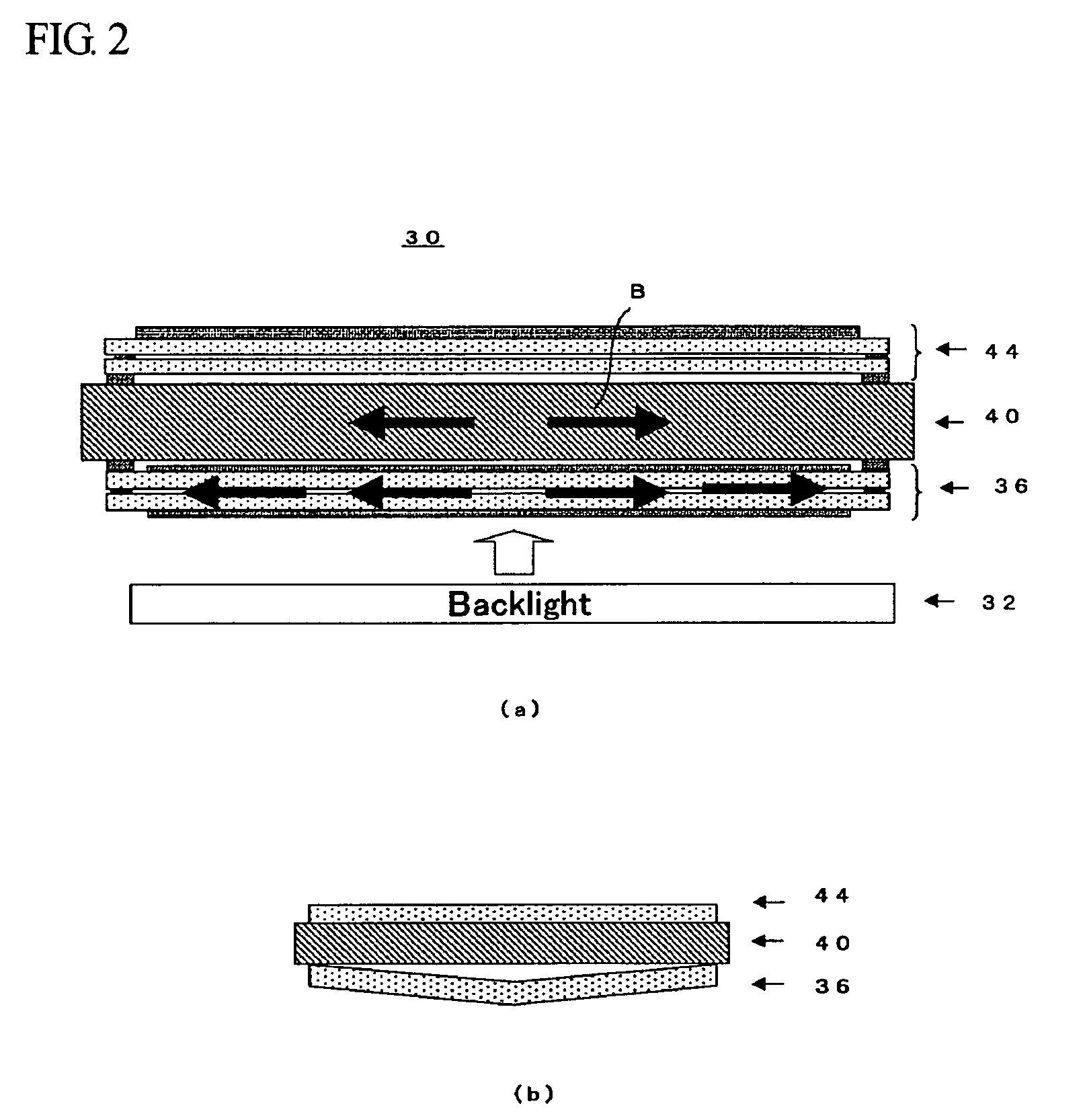Stereoscopic image display device having negative pressure regions within
a stereoscopic image and display device technology, applied in the field of stereoscopic image display devices, can solve the problems of thermal expansion of the gap between the liquid crystal display panel and the liquid crystal parallax barrier must be bigger, and the display quality of the stereoscopic image display device is worsened
- Summary
- Abstract
- Description
- Claims
- Application Information
AI Technical Summary
Benefits of technology
Problems solved by technology
Method used
Image
Examples
Embodiment Construction
[0031]In the following, embodiments of the stereoscopic image display device according to the present invention will be described with reference to the attached drawings. FIG. 1 is the view showing the constitution of a stereoscopic image display device 30 according to the present invention, where FIG. 1(a) is a schematic cross-sectional view thereof and FIG. 1(b) is the enlarged view of the portion marked A of FIG. 1. The stereoscopic image display device 30 according to the present invention is constituted by arranging a liquid crystal display panel 36 and a liquid crystal parallax barrier 44, adhered together by an adhesive agent while sandwiching a spacer member 40 such as a glass substrate, above a backlight 32.
[0032]The liquid crystal display panel 36 is a transmissive liquid crystal panel consisting of a rear glass plate 36a located on the incident side of light, a front glass plate 36b located on the output side of light, pixel electrodes (not shown) formed on the inner side...
PUM
| Property | Measurement | Unit |
|---|---|---|
| pressure | aaaaa | aaaaa |
| thermal expansion | aaaaa | aaaaa |
| shape | aaaaa | aaaaa |
Abstract
Description
Claims
Application Information
 Login to View More
Login to View More - R&D
- Intellectual Property
- Life Sciences
- Materials
- Tech Scout
- Unparalleled Data Quality
- Higher Quality Content
- 60% Fewer Hallucinations
Browse by: Latest US Patents, China's latest patents, Technical Efficacy Thesaurus, Application Domain, Technology Topic, Popular Technical Reports.
© 2025 PatSnap. All rights reserved.Legal|Privacy policy|Modern Slavery Act Transparency Statement|Sitemap|About US| Contact US: help@patsnap.com



